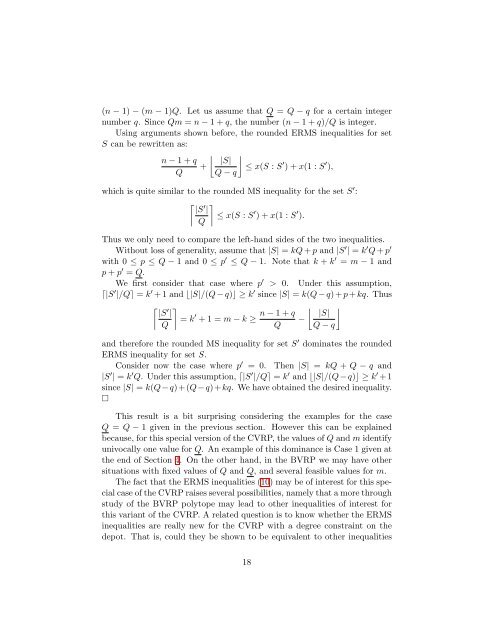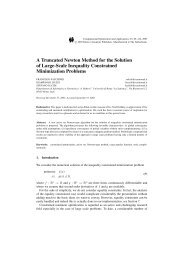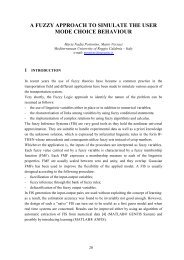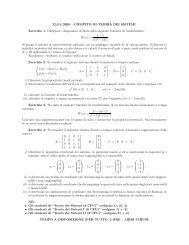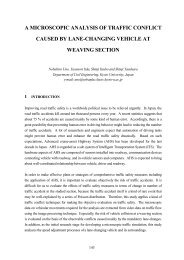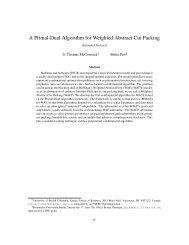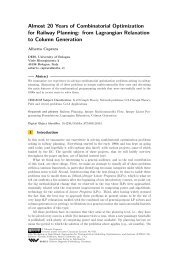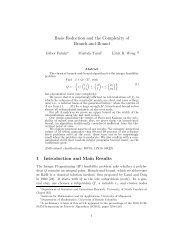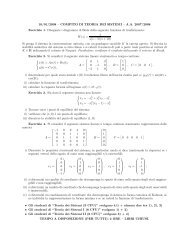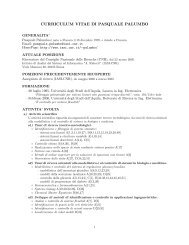Reverse Multistar Inequalities and Vehicle Routing ... - IASI-CNR
Reverse Multistar Inequalities and Vehicle Routing ... - IASI-CNR
Reverse Multistar Inequalities and Vehicle Routing ... - IASI-CNR
Create successful ePaper yourself
Turn your PDF publications into a flip-book with our unique Google optimized e-Paper software.
(n − 1) − (m − 1)Q. Let us assume that Q = Q − q for a certain integer<br />
number q. Since Qm = n − 1 + q, the number (n − 1 + q)/Q is integer.<br />
Using arguments shown before, the rounded ERMS inequalities for set<br />
S can be rewritten as:<br />
n − 1 + q<br />
Q<br />
<br />
|S|<br />
+ ≤ x(S : S<br />
Q − q<br />
′ ) + x(1 : S ′ ),<br />
which is quite similar to the rounded MS inequality for the set S ′ :<br />
<br />
|S ′ |<br />
≤ x(S : S<br />
Q<br />
′ ) + x(1 : S ′ ).<br />
Thus we only need to compare the left-h<strong>and</strong> sides of the two inequalities.<br />
Without loss of generality, assume that |S| = kQ + p <strong>and</strong> |S ′ | = k ′ Q + p ′<br />
with 0 ≤ p ≤ Q − 1 <strong>and</strong> 0 ≤ p ′ ≤ Q − 1. Note that k + k ′ = m − 1 <strong>and</strong><br />
p + p ′ = Q.<br />
We first consider that case where p ′ > 0. Under this assumption,<br />
⌈|S ′ |/Q⌉ = k ′ + 1 <strong>and</strong> ⌊|S|/(Q − q)⌋ ≥ k ′ since |S| = k(Q − q) + p + kq. Thus<br />
|S ′ |<br />
Q<br />
<br />
= k ′ + 1 = m − k ≥<br />
n − 1 + q<br />
Q<br />
−<br />
<br />
|S|<br />
Q − q<br />
<strong>and</strong> therefore the rounded MS inequality for set S ′ dominates the rounded<br />
ERMS inequality for set S.<br />
Consider now the case where p ′ = 0. Then |S| = kQ + Q − q <strong>and</strong><br />
|S ′ | = k ′ Q. Under this assumption, ⌈|S ′ |/Q⌉ = k ′ <strong>and</strong> ⌊|S|/(Q−q)⌋ ≥ k ′ +1<br />
since |S| = k(Q−q)+(Q−q)+kq. We have obtained the desired inequality.<br />
<br />
This result is a bit surprising considering the examples for the case<br />
Q = Q − 1 given in the previous section. However this can be explained<br />
because, for this special version of the CVRP, the values of Q <strong>and</strong> m identify<br />
univocally one value for Q. An example of this dominance is Case 1 given at<br />
the end of Section 4. On the other h<strong>and</strong>, in the BVRP we may have other<br />
situations with fixed values of Q <strong>and</strong> Q, <strong>and</strong> several feasible values for m.<br />
The fact that the ERMS inequalities (10) may be of interest for this special<br />
case of the CVRP raises several possibilities, namely that a more through<br />
study of the BVRP polytope may lead to other inequalities of interest for<br />
this variant of the CVRP. A related question is to know whether the ERMS<br />
inequalities are really new for the CVRP with a degree constraint on the<br />
depot. That is, could they be shown to be equivalent to other inequalities<br />
18


